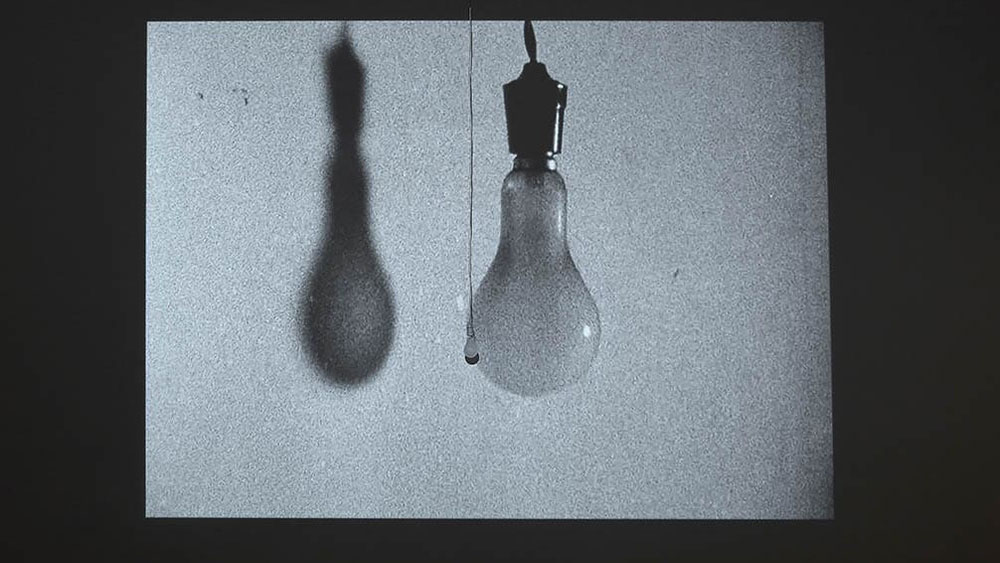“All we know is what other human beings tell us,” muses the narrator in Mary Filippo’s black-and-white assemblage Feel the Fear (1990). In the five works of video art that comprise the “If It’s Too Bad To Be True” program at The Film-makers’ Cooperative, the throughline maintains that broadcast television media filters our world and enforces itself upon our reality. In short, we only know what the media tells us.
Spanning nearly four decades of experimental video art, from 1966 to 2002, the program examines a bygone age of mass media, mostly through the use of found footage, interrogating the form by turning its gaze upon itself. Each work attempts to extract the viewer from complacent consumption, begging our awareness of the role we play as an audience member in a codependent relationship with media and the authorities that preside over it.
Malcolm LeGrice’s structuralist-materialist film Castle 1 (1966, pictured at top) uses footage found in the trash bins behind London’s Soho post-production houses to assemble a collage of film clips, including one of a naked hanging lightbulb. To break the illusion separating what’s on screen from “reality,” a flashing lightbulb is hung in front of the screen. The program then jumps to 1985 with Martha Rosler’s formative work, from which the program derives its title, If It’s Too Bad To Be True It Could Be DISINFORMATION. Rosler’s work, unlike the others, depends not on collage, but décollage. The artist intentionally removes words from an NBC Nightly News broadcast covering the Nicaraguan Revolution. As the disassembled sentences scroll teleprompter-style over the screen, the message of the broadcast is entirely garbled, begging the question: What information is really conveyed here?
In Jason Simon’s Production Notes: Fast Food For Thought (1987), TV advertisements for brands like McDonald’s and Mars are followed by a mute, decelerated version narrated by the artist, who reads notes from the ad agency to the production company. The secondary presentation blatantly reveals the agency’s intent to manipulate viewers, and their notes reduce the characters within them to aspirational archetypes. Filippo’s Feel the Fear departs from the other videos, fluctuating between repurposed footage and original material to portray our dependence to media as similar to addiction to other substances. We then arrive at the beginning of the 21st century, shortly after 9/11, with Omer Fast’s CNN Concatenated (2002). Fast uses an uncanny collage of CNN clips to create a shockingly fast-paced video. By splicing together the footage at intervals of a single word, Fast constructs a monologue directly addressing the viewer with sometimes violent language. We are forced to contend with the toxic parasocial relationship we have developed with the people on-screen.
The “If It’s Too Bad To Be True” program acts as a precursor to the current age of social media and the attention economy. Though audiences around the times most of these videos were created mostly contended with only broadcast and cable television as sources of screen-oriented news media, today’s public is saturated with information from a far broader range of commentators in a seemingly bottomless well of apps and platforms. There is much more content to sift through and examine: influencers tell us what moisturizer to buy, scammers spew conspiracy theories, and it’s more difficult than ever to distinguish where information-sharing ends and ads begin. By tracing the lineage of media narratives leading back to the broadcast age through video art, we can recognize that we are active players in media consumption, who might empower ourselves to know more than just what we are told.
"If It's Too Bad To Be True” screens tonight, November 15, at The Film-Makers’ Cooperative.



